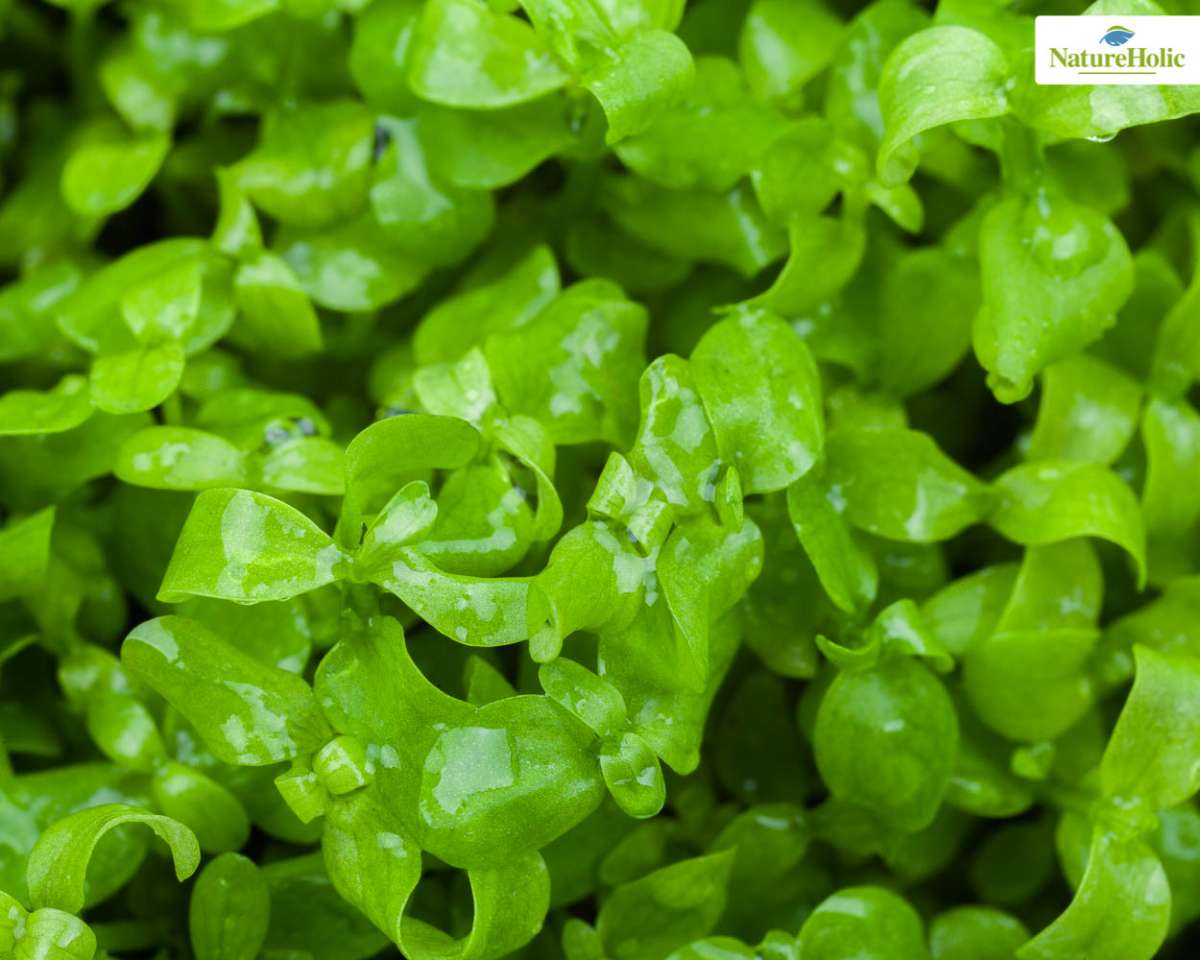The basics of aquarium plants - stem plants for the aquarium background
Table of Contents
- What is a stem plant?
- The use of stem plants in the aquarium background
- Preparing stem plants before planting and planting them properly
- Prune and rejuvenate stem plants correctly
- Propagate stem plants easily
- Fertilize stem plants correctly
- The most beautiful stem plants for the aquarium background
Stem plants grow quite fast, especially in good conditions they can go up quite rapidly depending on the species. Stem plants are easy to trim back, and most species tolerate regular determined pruning very well. Stem plants for aquariums react to trimming with a more branched growth and a more compact shape.
What is a stem plant?
A stem plant consists of the eponymous stem, which grows straight or curved upwards towards the light and is covered with leaves on the sides and at the top. The stem plant can also branch, but the leaves are always alternate or uniform on the stem.
Stem plants can be found in all possible shades of green from juicy light green to noble blue-green or olive green. Their foliage can also take on brownish tones. But it goes even more colorful, stem plants are also available with yellow, orange, purple or red to deep scarlet leaves and stems. Often the new shoots are colored differently than the older foliage. A lot is possible with stem plants in terms of design.
Fast-growing stem plants are also great for combating algae plagues - they consume excess nutrients that are no longer available to the algae, thus competing with the annoying algae plagues.

The use of stem plants in the aquarium background
Stem plants look good in nano aquariums as compactly grown shrubs in the background, but they are also a suitable growth in the background in larger aquariums. Stem plants are originally marsh plants and can thus grow both above and below water. In paludariums and open aquariums, they can therefore be allowed to grow well above the water surface. Then the stem plants even sometimes come to bloom.
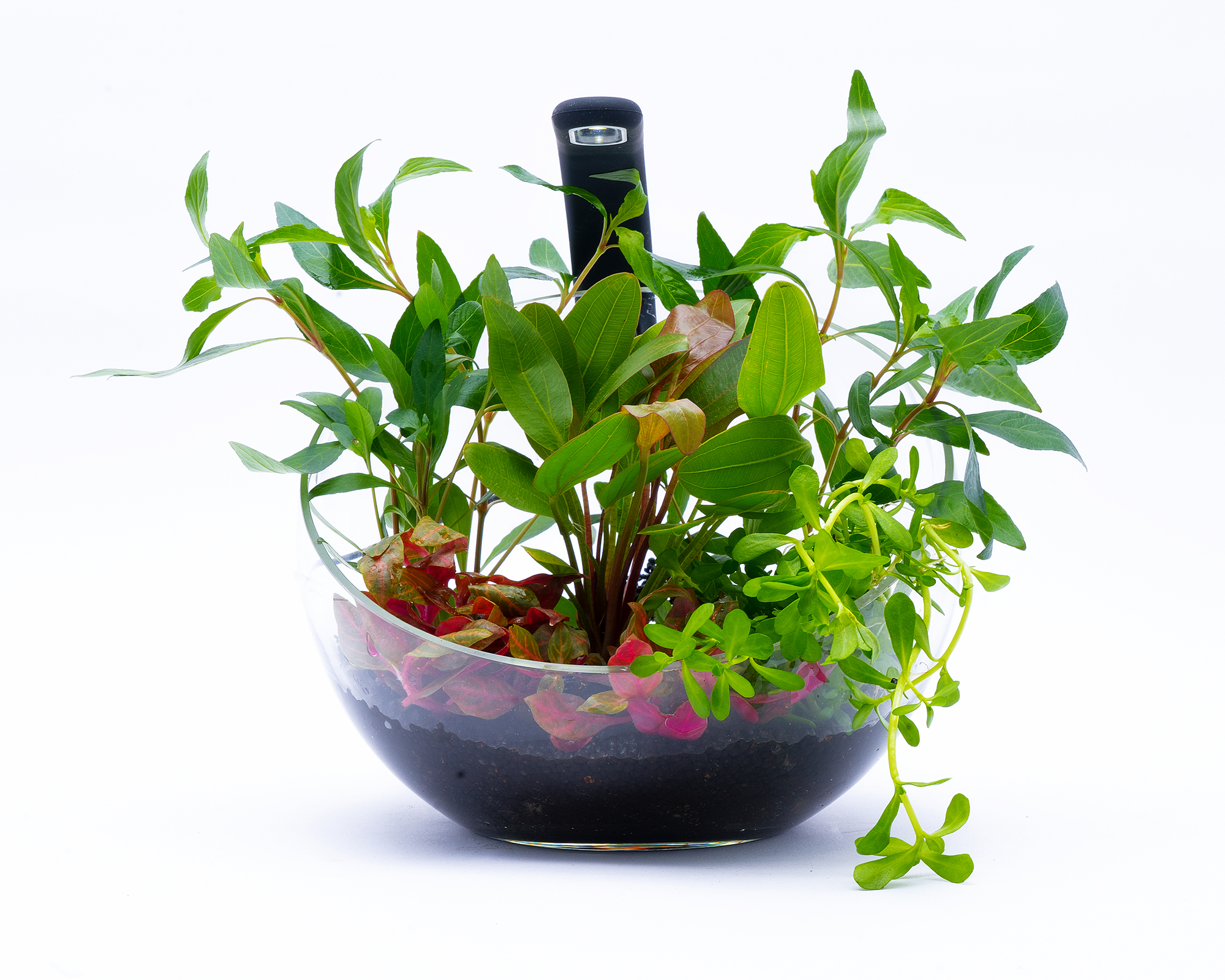
Prepare stem plants before planting and plant them correctly
Ideally, you should buy stem plants as in vitro products. Aquarium plants are also available for purchase in the form of a potted plant or as a bunched plant.
Invitro plants have the great advantage that they do not contain dangerous fertilizers or pesticides, they do not bring algae and they do not bring parasites or other unwanted critters. To properly prepare In Vitros for planting, thoroughly rinse the nutrient substrate from the roots. Then carefully separate the individual stems and plant them one at a time with some spacing. Aquarium plants grown in vitro do not need to be watered separately.
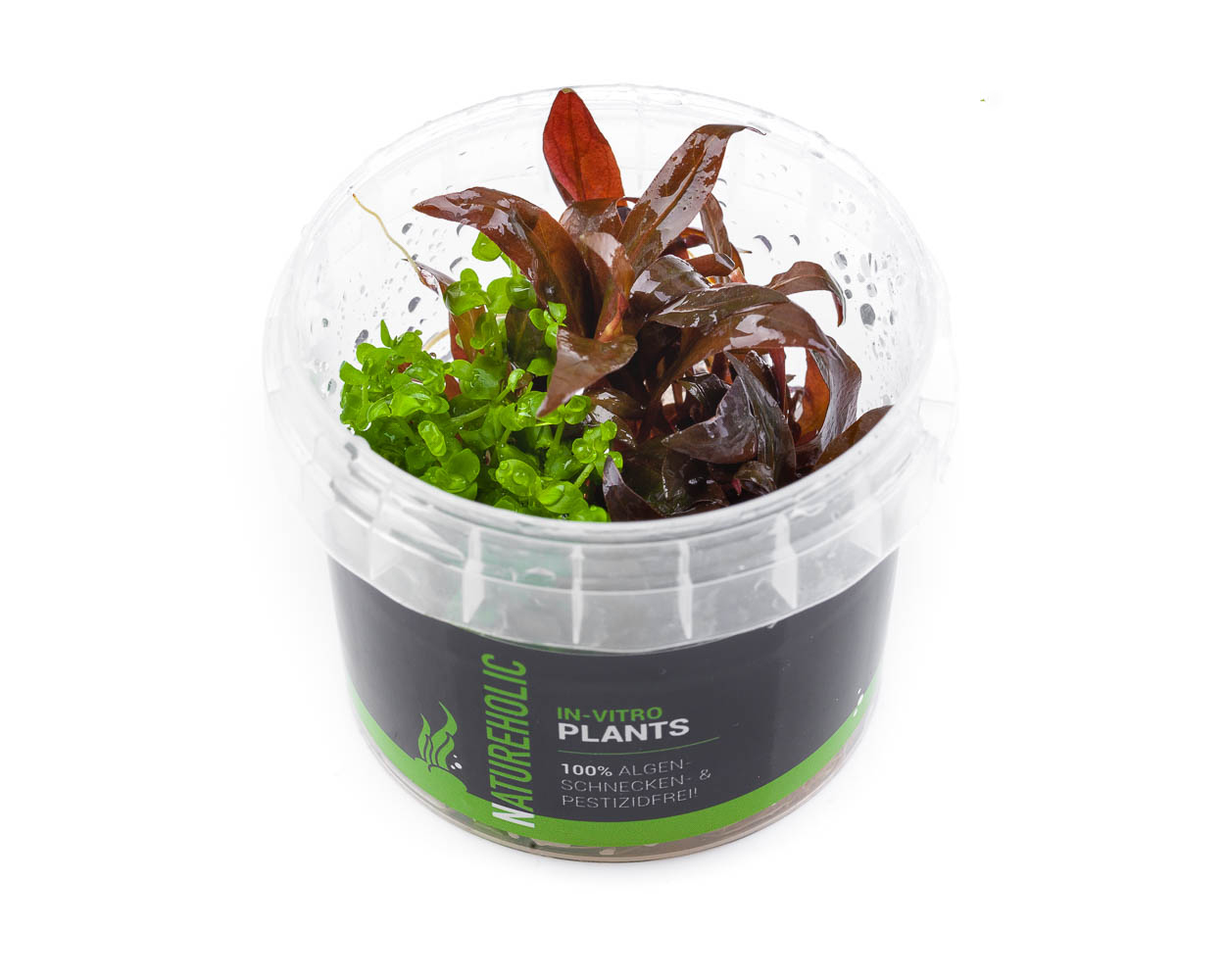
Please note: Unlike in vitro plants, stem plants as potted plants and bunch plants are conventionally grown in emersed conditions and may have been treated accordingly. They may also bring unwanted passengers such as worms or snails or even algae. Especially for export, plants are treated with pesticides in their countries of origin. Therefore, they should first be watered for two weeks in an extra container with light for use in the shrimp aquarium.
Stem plants grown as potted plants often grow in rockwool. Under no circumstances should this substrate be placed in the aquarium - the fibers of rockwool can get into the gills of the fish or shrimp in the aquarium and damage them. Often, the rock wool also contains a particularly large amount of deposits of substances undesirable in the aquarium, which were used in plant cultivation.
However, you don't need to laboriously pluck the rockwool away from the roots. Stem plants have the pleasant property of taking root very quickly. It is therefore sufficient to cut off the stem plant directly above the pot and to stick the loose stems with some distance - about 3-4 cm are enough - about 2 to 3 cm deep into the bottom of your aquarium.
Bunched plants are even easier to prepare. You remove the lead tape that holds the plants together and plant the individual shoots after watering with a little distance in the substrate.
Stick the cuttings of stem plants so that they hold
If you simply stick the smooth stem of the stem plant into the substrate, it is possible that it will slip out again because the plant has a certain buoyancy in the water. This can be prevented with a simple trick: although you remove the leaves from the part of the stem that is stuck into the soil, so that they do not die in the soil and begin to rot, you leave the leaf stalks in place. They act like little barbs or anchors in the substrate and hold the cutting in place. This effectively prevents the stem plant from slipping out of the substrate until it has roots.
Prune and rejuvenate stem plants properly
Most stem plants for the aquarium background grow on and on, usually to the water surface or even beyond. Therefore, if you want to keep your plant cushions short and compact, you can't avoid a spirited pruning. To do this, take a pair of really sharp, long plant shears(curved or straight, shorter models are available for nano aquariums), and cut the stem plant off at about the top third with a straight cut just above a leaf origin.
Most stem plants will branch willingly at the cut and grow rapidly from there. You won't see the cuttings after just a few days. Pruning and branching makes the plants nice and dense and compact.
Pruning is also indicated if the plant clumps, especially in the lower area, shed leaves over time and no longer look good visually. Cut off the upper third of the plant with scissors, pull the old plant parts out of the substrate and insert the upper shoots in their place into the substrate of your aquarium.

Propagate stem plants easily
Even if you could theoretically propagate at least the flowering stem plants by seeds, asexual propagation by cuttings has prevailed in aquarium practice - on the one hand it is much, much easier, and on the other hand it is also much faster.
To do this, simply cut off the upper third of the stem plant and stick it into the substrate. Done. The roots come up on their own, and in no time you have a new plant, which you can then make bushier and more compact by pruning it back. Conveniently, the plant shoots produced during pruning can then be used again directly as cuttings!
To prevent the plants from shading each other, always leave about 3-4 cm of space between the individual stems.
Fertilize stem plants correctly
Especially the stem plants with red foliage need not only a lot of light but also a good supply of nutrients and CO2 for an optimal coloration. Stem plants readily absorb nutrients from the water through their leaves, so a good liquid fertilizer for the aquarium is the best solution.
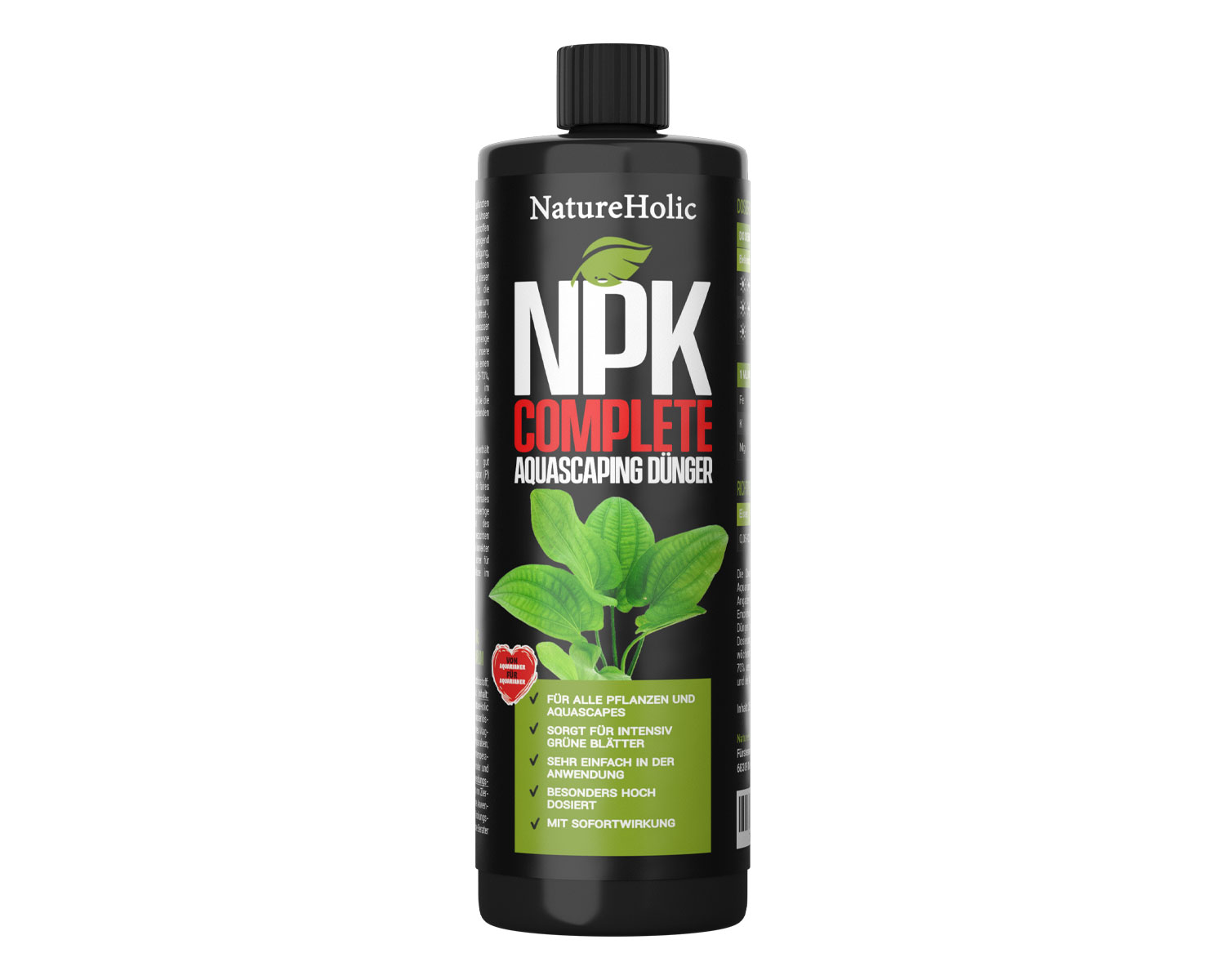
The most beautiful stem plants for the aquarium background
Alternanthera - parrot leaf
The red-leaved parrot leaf Alternanthera reineckii is available in various cultivated forms in very different shades of red, from pink to almost purple. This red-leaved aquarium plant is still red even if it is not fertilized with CO2 and if the light is not quite so bright. However, with plenty of light, a good supply of nutrients and CO2 fertilization, it is much more durable, grows better and shows more intense colors.
There are several varieties of parrot leaf, such as the "Rosanervig" variety or the "Pink" variety.
Also the rather rarely found round-leaved parrot leaf Alternanthera bettzickiana is a great red-leaved plant for the aquarium, which sets beautiful color accents in the background.
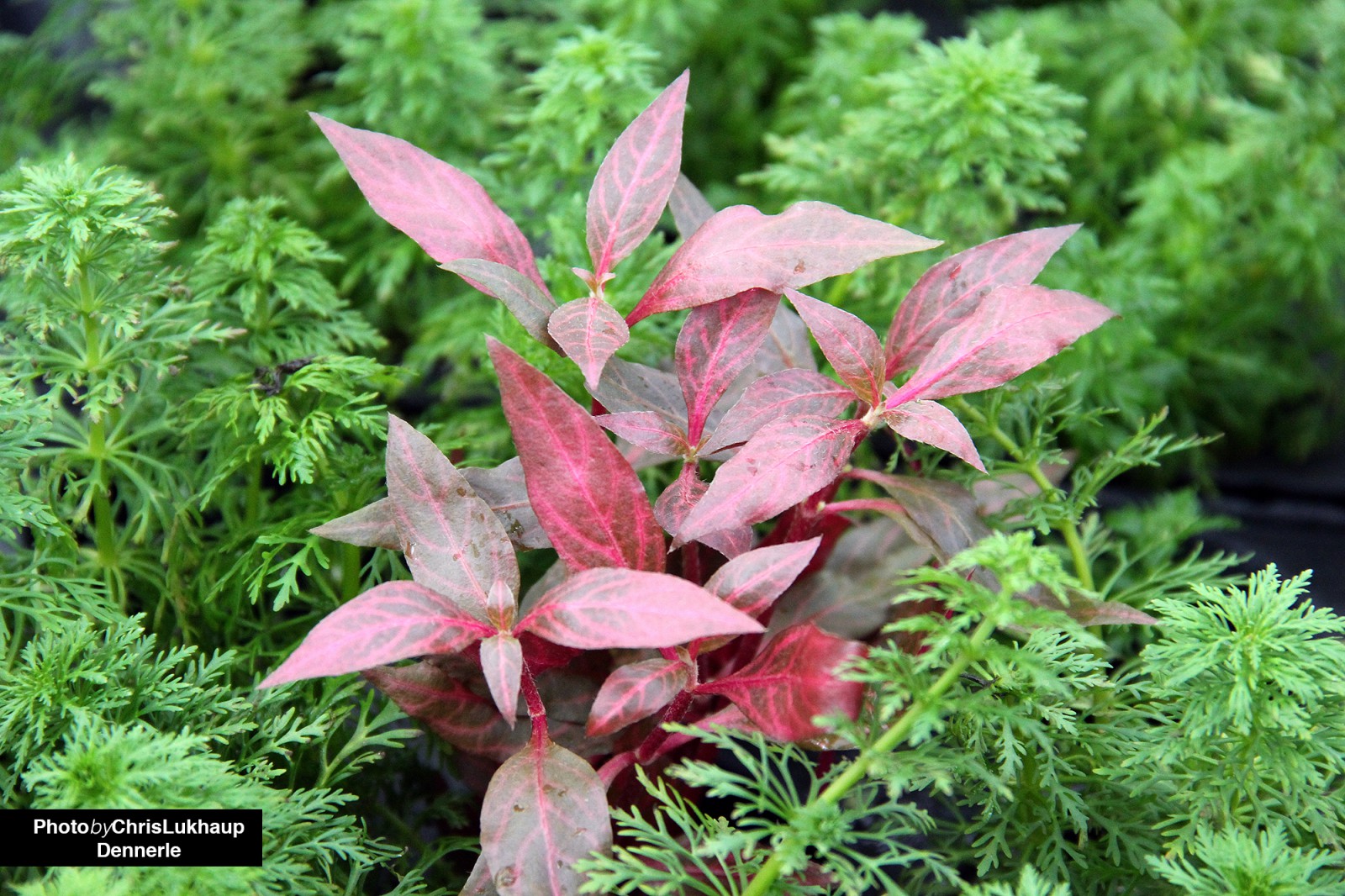
Ludwigia - ludwigia, hayweed
There are also some beautiful color forms of the Creeping Ludwigia (which does not grow creeping in the underwater form, but more or less upright). Especially beautiful red is Ludwigia repens "Ruby". Under less light this Ludwigia becomes dark green to reddish, under really much light and with good nutrient supply it is bright red.
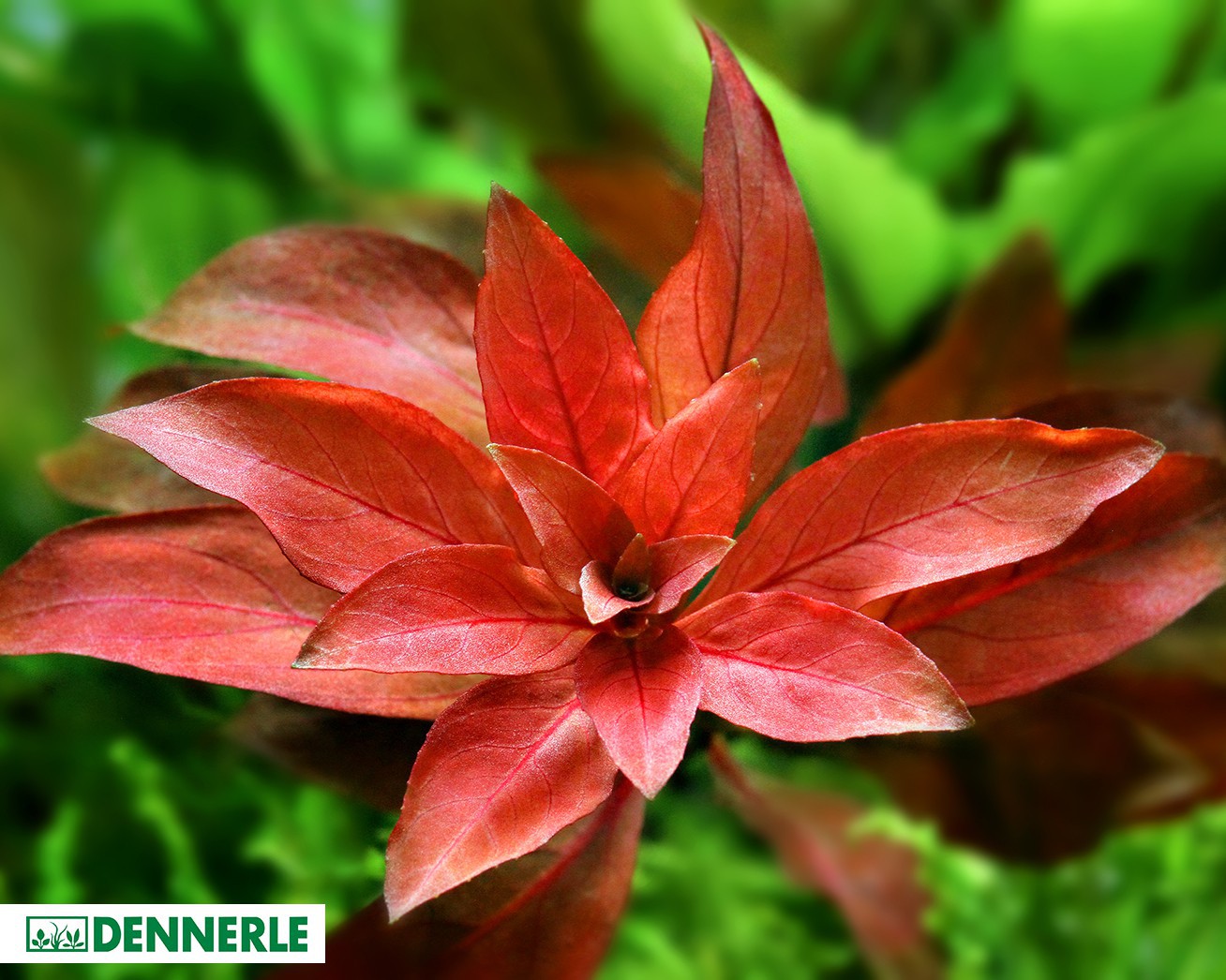
Hygrophila - water friends
From the genus Hygrophila some great stem plants have made it into the aquarium hobby. The undemanding water friends usually grow very fast, are good nutrient eaters and thus make life difficult for annoying algae. Most aquatic friends are pure green, with much light the fresh shoots can show brownish tones.
Particularly worthy of mention are the broad-leaved giant water friend Hygrophila corymbosa, the Thai water friend (Hygrophila corymbosa "Siamensis") and the giant water friend (Hygrophila corymbosa "Stricta") with their large, more or less broad, pointed green leaves and extremely fast growth. In contrast, the Indian water friend Hygrophila polysperma has somewhat smaller, more rounded leaves. With plenty of light, the tips of the shoots turn an attractive brown-reddish color.
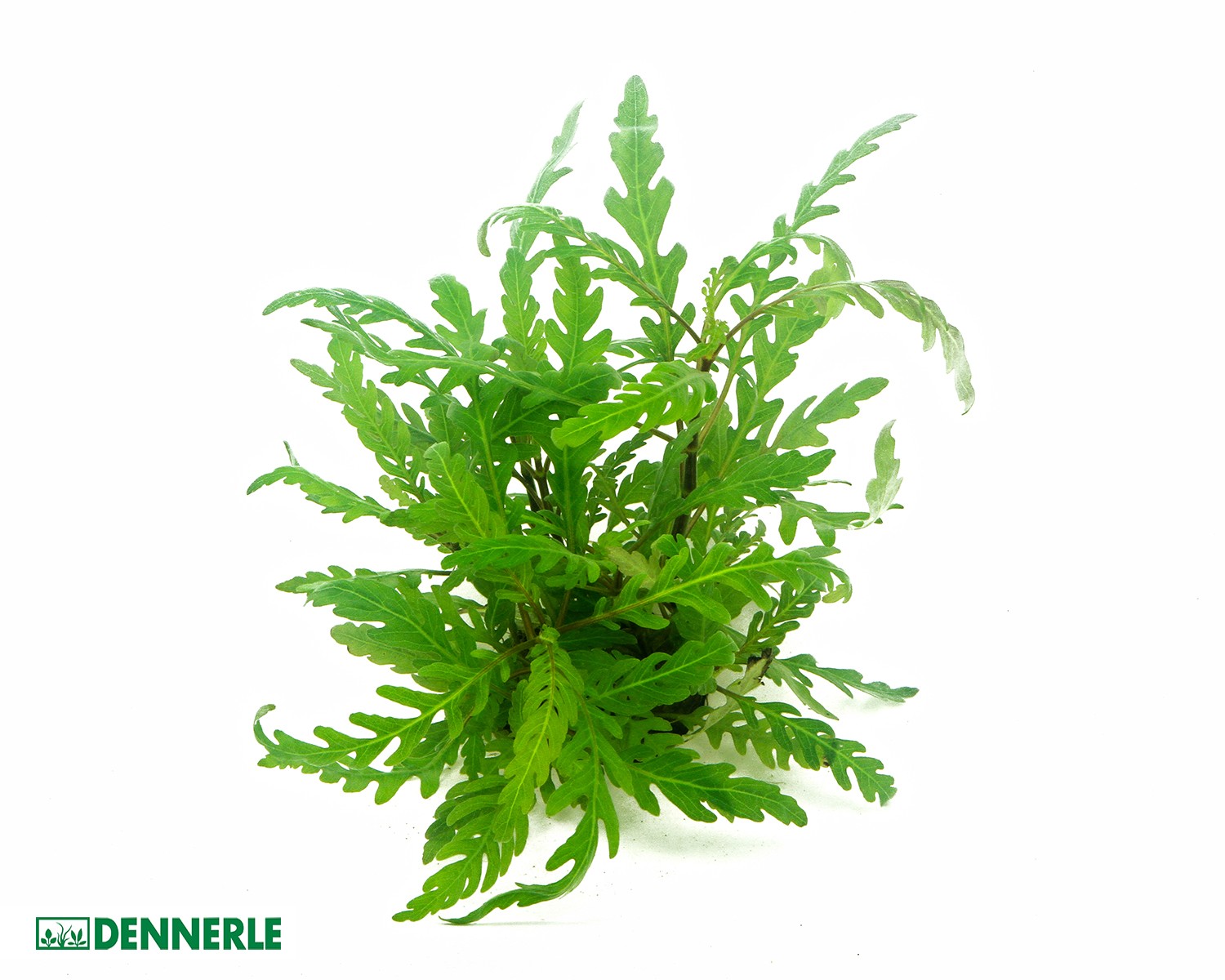
Murdannia - day flowers
Murdannia keisak, the Asian dayflower, is a grass-like growing stem plant that looks like bamboo in the aquarium and contrasts beautifully with broader-leaved and not quite so strictly upright growing stem plants, especially in the background of the tank.
Limnophila - swamp friends
The robust and adaptable aquarium plants of the genus Limnophila are also popular stem plants for the background of the aquarium. They grow quickly and are rather filigree in foliage. Particularly popular are the flowering stemless marsh plant Limnophila sessiliflora and the aromatic marsh plant Limnophila aromatica, which is even used as a spice plant in its native country. They, too, get brownish overhauled leaves under a lot of light, especially in the younger foliage.
Pogostemon - Patchouli
In the genus Pogostemon there are many terrestrial plants, some of which are used for perfume production (Pachouli plants), but there are also a few marsh plants, which can be kept very well in the aquarium. These are characterized by beautifully arranged star-shaped radiating leaves on the stems. The star plant Pogostemon stellatus from Asia, like the Indian star plant Pogostemon erectus, shows beautiful green tones, with brownish or reddish nuances mainly at the shoot tips when there is a lot of light.
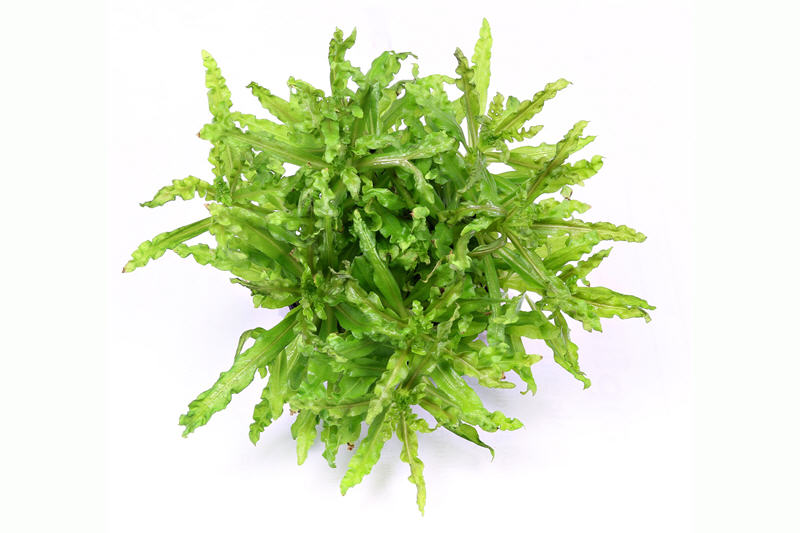
Rotala - Loosestrife
The rather round-leaved stem plants from the genus Rotala are available in various colors for the aquarium background. While most can show reddish hues, Rotala sp. "Green", the Green Rotala, remains pure green even under a lot of light, adding welcome accents to the aquarium background.
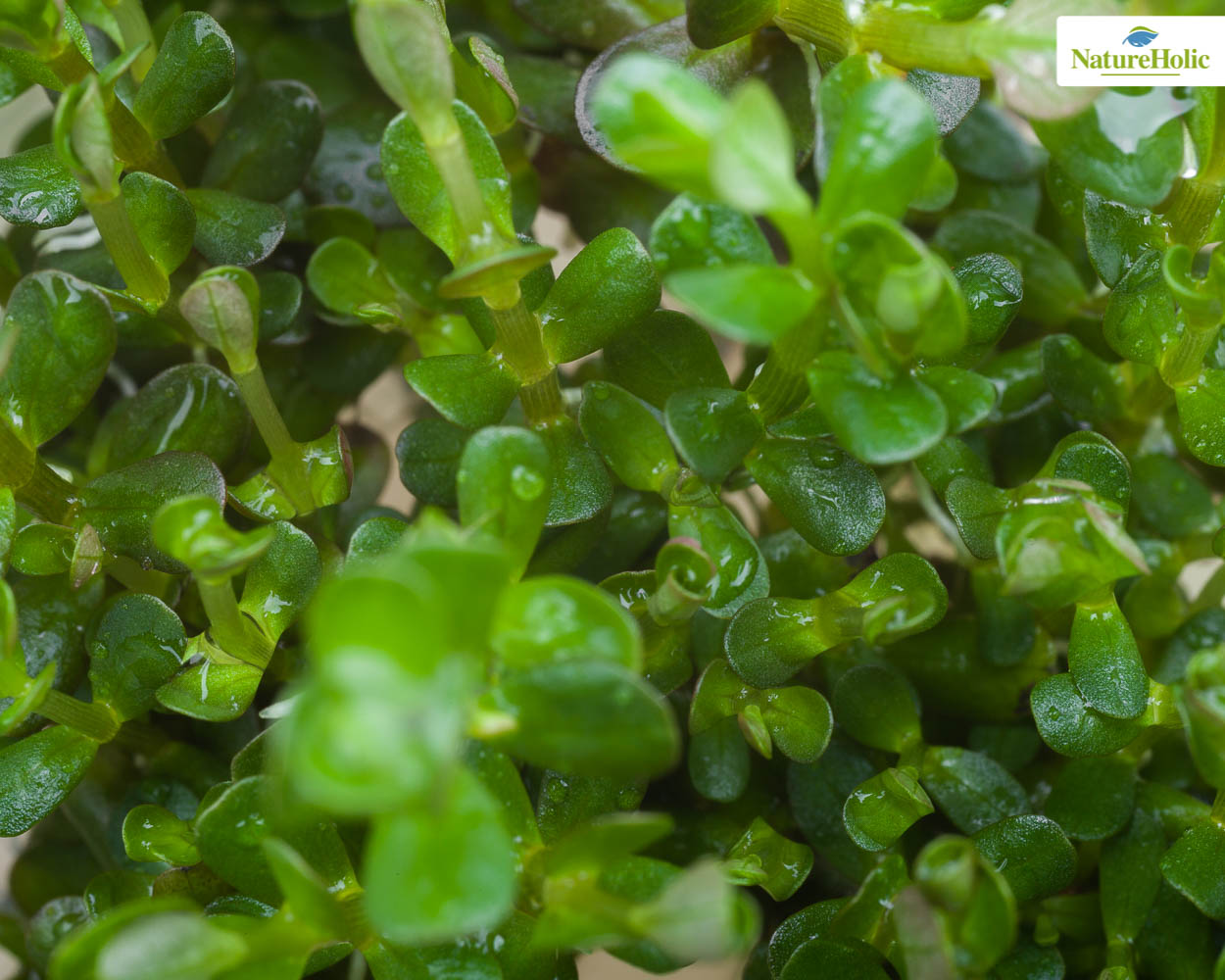
Lysimachia - Pennyworts
Of the Pennyworts, only one has actually made it into aquaristics, Lysimachia nummularia, the Gold Pennywort. This great plant can grow just as well on dry land as it can underwater. While it grows creeping on land, however, the yellow-green easy-care stem plant shows itself under water as an upright growing bright fresh splash of color in the background of the aquarium.
